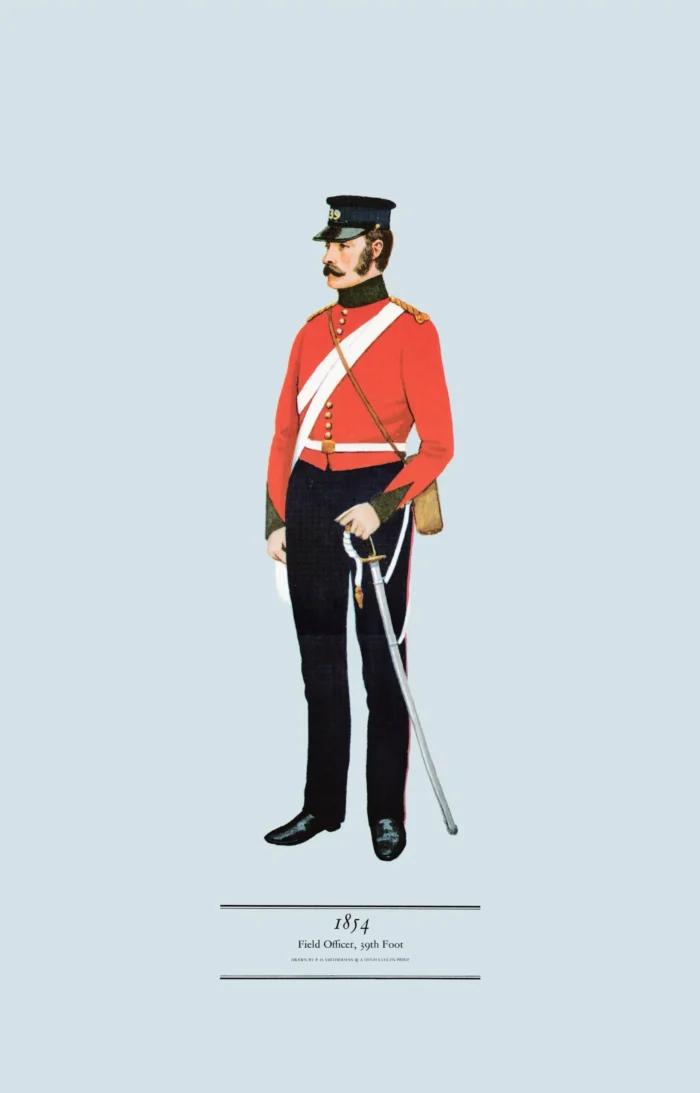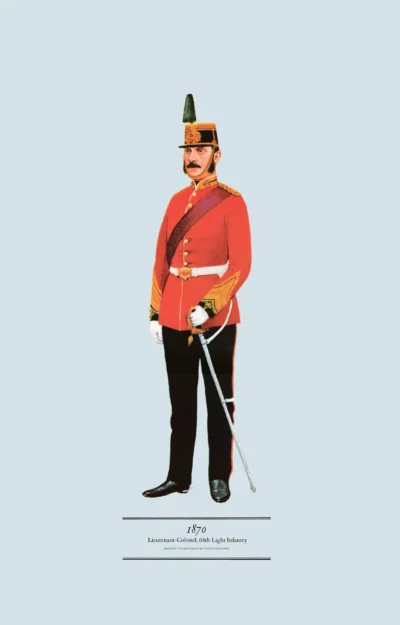Field Officer, 39th Foot, 1854 (Dorsetshire Regiment)
£20.00
Raised 1689 became the Dorsetshires then the Devon & Dorsets before merging into The Rifles in 2007– RIFLES (scroll down for a more detailed Description)
Published 1970 by © Hugh Evelyn Limited; drawn by Colonel Philip Henry Smitherman (1910-1982), Royal Corps of Signals
Size: c. 24.5 x 37.5 cm [9 ½ ″ x 14 ½ ″] (may vary slightly from printers’ cut 50 years ago)
Printed on on medium cardstock weighing 144 g/sm2 faced in light greyish blue (RGB c. d4e1e8)
Print is STANDARD size – shipping is the same for 1 to 10 prints (based on largest print size in your order) – see Shipping & Returns.
In stock
Description


The 39th was raised in 1702 and served originally as marines. It was the first regiment of the British Army to arrive in India, in 1754, whence comes one of its mottoes, ‘Primus in Indis‘. It was thus the only King’s regiment to fight at Plassey, an honour which it carried on its colours. The Dorset Regiment was a line infantry regiment of the British Army in existence from 1881 to 1958, as the county regiment of Dorset. Until 1951 it was formally called the Dorsetshire Regiment, although usually known as “The Dorsets”. In 1958, after service in the Second Boer War along with World War I and World War II, the Dorset Regiment was amalgamated with the Devonshire Regiment to form the Devonshire and Dorset Regiment. In 2007, it was amalgamated with the Royal Gloucestershire, Berkshire and Wiltshire Regiment, The Light Infantry and the Royal Green Jackets to form a new large regiment, The Rifles.In 1881 it combined with the 54th to become the Dorsetshire Regiment, then, in 1959, The Devonshire and Dorsets. It is now part of The Rifles.
This print is based on a photograph by Roger Fenton, the famous nineteenth century war photographer. This officer of the 39th is in the Crimea in his ‘trench kit’. Although battles were fought in full-dress uniform, duties such as patrols or duties in the trenches were carried out in the dress which seemed most suitable to the officers taking part. This officer is wearing his undress hat, undress jacket, a waterbottle, a haversack, his field-glasses carried in a pouch slung behind him on his white buff cross-belt, and, of course, his sword. In cold weather they often wore sheepskin coats known as ‘bunnies’, and the knitted caps still called ‘Balaclava helmets’. In the photograph on which this plate is based several officers of the regiment are shown, similarly dressed, but with several differences apparent between their jackets. On active service they took the opportunity to wear out old uniforms which had been superseded.
Additional information
| Dimensions | 24 × 37.5 cm |
|---|





